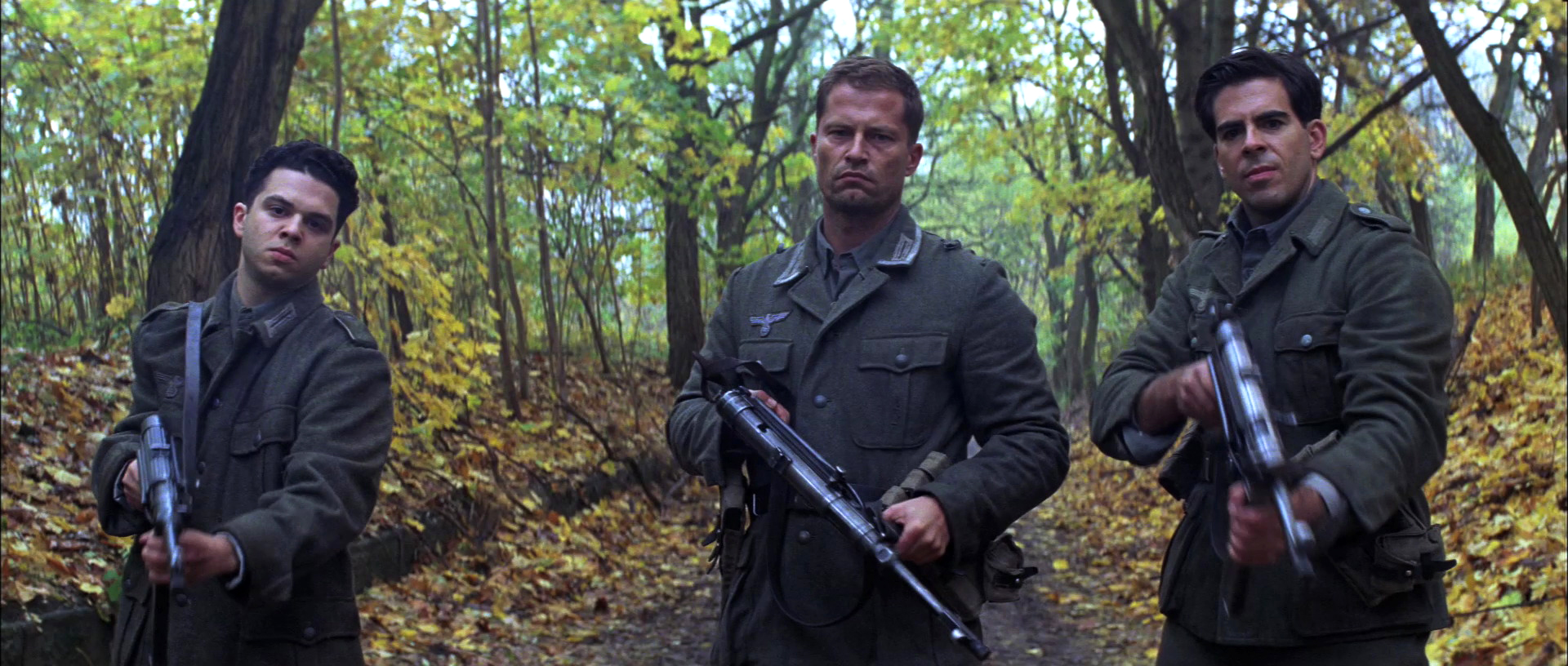Quentin Tarantino may be one of the few living writers whose name alone incites visceral reactions when spoken aloud. I have personally witnessed this. I’ve watched polite, well-mannered people transmogrify into hardened verbal street fighters while debating Tarantino films: whole friendships dismantled, brother turned against brother, as battle lines of biblical proportions emerge and two distinct sides inevitably take their places—those for his movies, and those against.
Hyperbole? Okay, yes. A little. But overstatement is the trade in which Tarantino traffics. Perhaps it’s suitable (even poetic) that his work, often singularly characterized by its highly stylized violence, should provoke such frenetic responses from his viewership.
Consider his sixth feature-length film in his (still) steadily expanding filmography. Set in an alternate historical timeline, Inglourious Basterds is a war-film-meets-dark-comedy, reimagining the destruction of the Third Reich. It chronicles two independent assassination plots against Hitler: one led by a French-Jewish cinema proprietor named Shosanna (Mélanie Laurent), and the other initiated by an ensemble of Jewish-American soldiers known as “The Basterds,” led by the raucous Lt. Aldo Raine (Brad Pitt). Separate from each other, these groups work to wipe out the Führer (and his high-ranking associates) in a slapstick, blood-soaked romp.
Tarantino has been no stranger to controversy, much of which has centered on his comedic, often irreverent approach toward violence and the socio-racial contexts in which they occur. This adds yet another layer of difficulty to the feat at hand in this film: that of achieving a complex and compelling story, particularly the sort that Inglourious Basterds grapples with in its racial, historical, and creative scope. Most notably throughout the film, gore remains more or less ubiquitous—at times indiscriminately frenzied, other times horrifically measured and intimate. The numerous moments of comic relief just somehow render the violence that much more grotesque.
Tarantino’s style dwells in incongruity. He approaches filmmaking with blithe abandon, vehemently asserting his authorial right to present stories however he imagines them—a claim to which I offer no objection. At the same time, he gets it absolutely wrong in his combative refusal to recognize more subtle aspects of an authorial presence: that however charming the idea of textual autonomy might be, one’s race and background do have substantial significance within the larger cultural context of storytelling. Naturally, this distinction raises the stakes when writing across experiential lines—for the author delivering the story, and for the audience consuming it. Sure, writers may do what they like. But they must do it well.

However deeply flawed I find some aspects of his artistic philosophies, I will not deny Quentin Tarantino’s clear talent for crafting intriguing stories, particularly by way of iconic and provoking characters. He’s truly skilled in this regard, as Inglourious Basterds showcases in its larger-than-life breadth and willful insistence upon rounding out its subjects, regardless of their roles. Consider the film’s primary antagonist, for example. No character better embodies the unholy pairing of appeal and brutality than SS Colonel Hans Landa (Christoph Waltz), whose main obsession is the ruthless pursuit and murder of Jews fleeing Occupied France.
Rendered a virtual incarnation of anti-Semitic Nazi ideology, Colonel Landa is calculating, intelligent, unnervingly charming, and viciously sadistic. Even in satire, Tarantino knows it would be easy just to make him a monster and be done with it. Instead, he does the opposite: he fashions Landa with the attention we might expect toward a hero. The colonel is not presented as a monster, or a caricature. He’s a human. Which makes him all the more terrifying.
These seemingly contradictory sensibilities—that of stylized brutality paired with humanizing character development—directly intersect in Tarantino’s peculiar brand of transgressive cultural criticism. Excess and oversaturation prove the rule throughout this film as he moves fluidly in his presentation of carnage: violence is rendered equal parts spectacular and banal. This should not be confused for mindlessness.
The debate concerning the relationship between virtual and actual violence in modern culture still remains largely inconclusive, but regardless of causality we do witness its forms through artificial mediums, or day-to-day life, in appalling abundance. Strangely enough, this is where Tarantino’s aesthetic of excess allows his films to do their best work. He pushes past the obvious question “Is this violence bad?” to a much more difficult interrogation: “What lies beneath our reactions, and non-reactions, to brutality or war? What does this reveal about us?” What renders violence horrific is as much the atrocity itself as who is capable of carrying it out.
Which, in a strange twist, makes a film like Inglourious Basterds an uncommon accomplishment, both in what it achieves and what it risks. It’s a film that expects us to think, instead of merely reacting, to be aware of ourselves grimacing on cue while otherwise enjoying the show. Trying, of course, not to laugh too loudly—lest we indict ourselves.